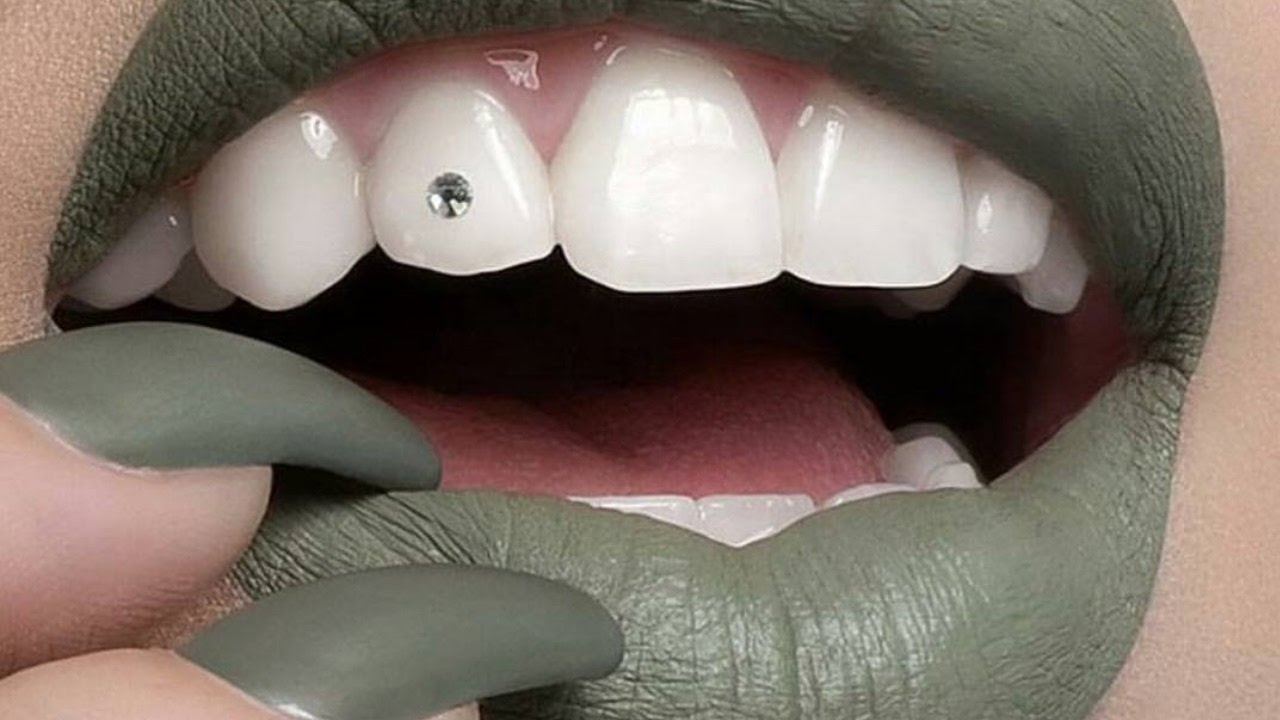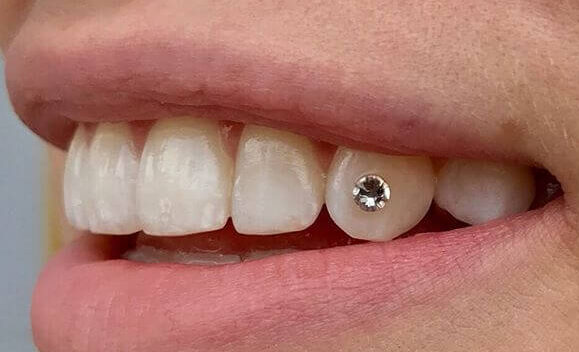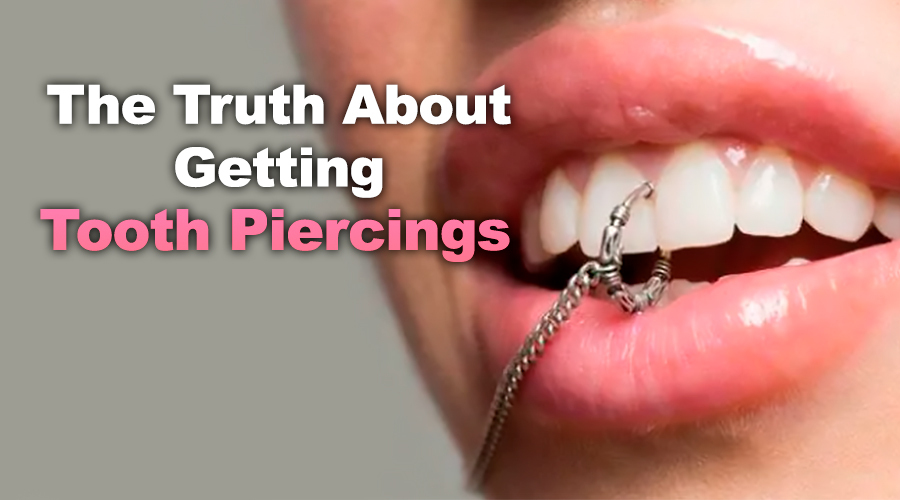Is Getting a Tooth Piercing a Good Idea?
You can get a tooth piercing in establishments like a piercing parlor or a dental office that provides that specific service. The majority of tooth piercings do not require a drilling procedure because they are set above the tooth’s enamel, avoiding the need to make a hole in the tooth.
However, some tooth piercings do need a drilling session, depending on the piercing. There is a wide selection of gems and minerals to choose from, like the following:
- Crystals
- Gold
- Copper
- Rubies
- Diamonds
- Sapphires

People like to place a tooth piercing on the most popular area: the four front teeth, avoiding the gums or other soft tissue. Tooth piercings also vary in types, forms, and longevity because there are temporary tooth piercings that contain small amounts of jewelry that last right around one or two months.
Depending on the type of oral care routines the person follows, semi-permanent jewelry or tooth piercing can last for large quantities of time.
Nowadays, tooth piercings and jewelry are becoming a popular trend that doesn’t pose a threat when comparing them to other oral piercing methods or techniques. Dentists do not encourage this practice, but if you choose to do so, make sure that you follow a proper oral care routine to avoid harming your oral health as much as possible.
Try scheduling dental check-ups regularly to allow your dentist to see if the jewelry is not damaging any areas of your mouth, like your teeth, gums, or tongue. Also, remember that if you decide to proceed with this treatment, it’s vital to comprehend the risks that come with it because an informed decision is always a smart one.
Does A Tooth Piercing Hurt?

It is best if you get a professional dentist to perform the treatment. You can look online or go to the establishment personally to learn more about tooth piercings. You should also ask if they have any experience in this matter. Because they can let you know more valuable information about any plausible side-effects you could experience once you get the treatment done.
The following are the steps for installing the tooth piercing successfully. It is generally a pretty easy and pain-free process that only requires one visit to the dental office or piercing parlor:
- Step 1: preparing the tooth before the procedure takes place by cleaning your tooth enamel with an acid etch.
- Step 2: Next, the dentist will set a compound, composite, or bonding substance in the area to assess the piercing.
- Step 3: they’ll secure the piercing area, which is critical to maintaining the position you wish the jewelry to have.
- Step 4: then they’ll harden the composite with a special laser, and it will take around thirty seconds for the piercing to settle in place.
- Step 5: once it’s properly in place, it will be up to you to take proper care of the piercing by gently brushing and avoiding hard foods. Keeping up with oral care practices is vital to keep plaque accumulation or harmful bacteria away from the object.
After a while, tooth piercing will fall out. It can be sooner if you neglect its care, but depending on the type of piercing you get, it can last from two weeks up to a month. If you want to remove it sooner for any reason, schedule an appointment with your dentist so you can take it off in a safe way that won’t damage your teeth at all.
What Complications Could Arise With Tooth Piercings?
Like any irregular or uncommon body modifications available out there, numerous complications accompany the implementation of tooth piercings; the following are just a few of the difficulties once the piercing is set in place:
- Excessive tooth sensitivity that can interrupt your ability to speak or chew, even flossing and brushing, could turn into a hefty task.
- Tooth piercings will make you more vulnerable to mouth infections because of the plaque that frequently accumulates around the object.
- Tooth piercings can develop bacteria causing an unpleasant smell in the person’s mouth, thus generating bad breath.
- Tooth decay could also accompany tooth piercings after a few days or weeks if the area that the piercing is covering is not receiving the proper oral care.
- Your lips could also suffer the most with the use of tooth piercings as the object can potentially scrape or cut the tissue inside the mouth. Following the damage your mouth can sustain, putting you at risk of developing canker sores.
- Gum inflammation and gum recession are also apparent right around the tooth jewelry. Not treating those symptoms can lead to more complex dental treatments or procedures.
- Tooth piercings can also affect your tooth enamel (a thin layer or shell that is in charge of protecting your teeth from harmful bacteria or diseases.) Your teeth might also sustain damage from constant abrasion.
- In case your tooth piercing falls out, it can potentially take a piece of your tooth with it. Chipping and damaging your tooth in the process, but there is a wide variety of dental work that can treat those kinds of dental problems.
- If the person who places the tooth piercing isn’t aware of any of your allergies, it can lead to a critical allergic reaction, depending on the materials and compounds that make up the jewelry.
As you can see, the list of complications that come with tooth piercings is quite long. As mentioned before, the only benefit of these types of piercing is just the esthetics. The process involves permanently changing your tooth’s surface’s physical appearance. So you must be very convinced when getting it. Fortunately, you can get treatment for any type of damage that a tooth piercing could cause, but to avoid needing it, make sure you commit to caring for your piercing.
Numerous dental offices will not provide this type of service because it may not follow their dental regulations or norms; your oral care is their number one priority after all. So, be sure to find a reliable place where you’ll know that your teeth will be in good hands.




Leave a Reply